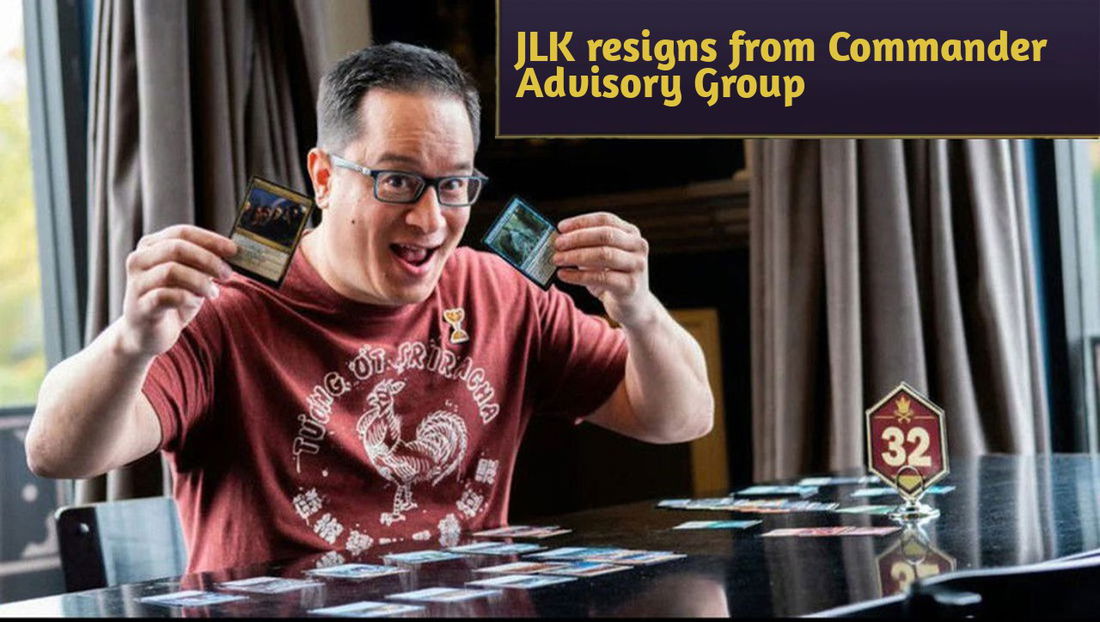Hello everyone!
It may look strange, but today's article is not about rules or updates... today I’m going to try out my first “deck tech”!
If you are looking for a quick and efficient deck to complete MtG Arena's daily missions, especially the first few victories, and also advance through the rankings to guarantee more packs in the season’s reset, let's go!
MonoRed Leyline - Duskmourn Standard
What is the Deck?

During Duskmourn’s spoiler season, the new cycle of Leylines (err... maybe not the black one) received some attention, and the red one, Leyline of Resonance, was highly rated for its potential to maximize power-increasing spells on your creatures.
Ad
Several lists began to pop up, aimed at presenting lethal damage as early as turn two, with some specific combinations. This divided opinions: was this a meme or a real functioning deck?
What made me build and playtest it was precisely the need to answer that question, while, of course, being very grateful to have a deck with quick games and relatively easy to put together - which certainly helps a lot when you’re “grinding” on Magic Arena.
Decklist and Details
Before getting to the strategy part of the article, I’d like to give a warning: this deck is initially designed for the “Best of 1” (or “Bo1”) format, which currently only exists in Arena.
At first, I wouldn't recommend playing the traditional “Best of 3” (or “Bo3”), since the use of sideboards really puts this deck in a disadvantage - your opponents will adjust and maintain starting hands with knowledge of what they're facing, and will certainly have much more impactful cards to bring against it.
Deck strategy
We are an aggressive deck, and through a combination of low-drop creatures that interact well with spells (especially those that buff power - which enhances any damage caused in combat) we’re looking to put pressure on the opponent's life points and achieve victory as early as possible.
Let's understand the role of each card in the deck.
Creatures
The deck's creatures can be divided into 2 groups:

We have 8 creatures that “grow” when you cast a spell (Monastery Swiftspear and Slickshot Show-Off), and 8 creatures that deal damage equal to their power when they die (Cacophony Scamp and Heartfire Hero). The Heartfire Hero actually belongs on both groups to an extent, but think of the little mouse as a sacrifice-potential first and foremost.

Ideally, you will always start your game with one of the 1-mana creatures, to present a threat and pressure the opponent from the first turn. The exception is Slickshot Show-Off - in fact, it’s the only 2-mana card in the deck, which albeit 1 turn slower, has very high power level and strong synergy with the rest of the deck, so it would be a mistake to not use it.
Spells
We have 16 one-mana spells with the sole purpose to give attack bonuses to our creatures. If we get a Leyline of Resonance on the field, each of these spells’ effects will be doubled, and this is precisely what the deck wants to capitalize on.

Turn Inside Out and Monstrous Rage have the best ratio of +3 power per one mana. Monstrous Rage also has the advantage of giving trample, but on the other hand, it's worse in multiples if you use it on the same creature, so keep that in mind (especially when evaluating mulligans).
Dreadmaw’s Ire has a good ratio of +2 power AND trample, in addition to +2 toughness, which helps in scenarios where you want your creature to survive combat. The effect of destroying artifacts is also occasionally interesting/useful. Many lists use Felonious Rage instead of Dreadmaw's Ire, but I personally prefer to guarantee trample, since without it any chump block from the opponent gains a lot of time, and also the toughness bonus helps your creature survive .
Ad
Might of the Meek is the option with the “worst” ratio in terms of power buff, but the important “draw a card” text makes it essential in order to give some consistency to the strategy, also being another card that gives trample. Don't forget two things: with a Leyline of Resonance on the table, it draws 2 cards (one from the original and one from the copy); and if you have a bad hand, you can use it on an opponent's creature to cycle your hand.

We also have a spell disguised as a creature, which is Callous Sell-Sword (actually the adventure side, Burn Together). Normally, it’s the card that ends games, after applying a series of power buffs to a creature and deal combat damage with it, Burn Together throws it in the opponent's face for more damage.
Leyline of Resonance
We mentioned the importance of Leyline of Resonance a few times already, so let's now talk directly about it.
Starting the game with it actually puts the deck in “turbo” mode. By doubling every spell in the deck, the value you generate is immense. It's hard to lose a game that you started with Leyline on the table AND got a creature (or ideally two) to apply the duplicate spells.
On the other hand, drawing Leyline on any turn will always be a lost card, since its 4-mana cost means if you got to the point of casting it it's because something went wrong with your plan to end the game quickly.
Aside from “magical christmasland” scenarios in which Leyline allows turn 2 wins, let's understand why it is so good in the deck: Leyline doubles spells, therefore, the card you “lose” from your initial hand is recovered as soon as you duplicate your first spell. It's as if Leyline had transformed into a second copy of that spell, but for 0 mana. So, the first duplication gives you a mana advantage, but not a card advantage (since you only “recovered” the card that Leyline itself cost you). It's from the second spell onward that Leyline brings a lot of value, as it becomes an extra card AND an extra mana.
So, keep this in mind: Leyline represents an advantage in “tempo” for your first spell, and an advantage in cards AND tempo for the second spell and the following ones.
Mulligan
As our deck has 16 creatures and 16 spells that can be “duplicated” by Leyline (the only one that cannot, Burn Together, is because it has two targets), we already have a good indication for the deck's mulligans: hands with Leyline need at least one spell to “get even”, and ideally two or more spells to generate value.
Mana base

20 mountains is as basic as you can get, but it is possible to add some dual lands that add both red and black, to eventually cast Callous Sell-Sword.
If you want to keep the deck simple and cheap, stick with the mountains, but if you want to invest, put some Sulfurous Springs and Blackcleave Cliffs - I recommend never using lands that don't add red mana, so as not to run the risk of disrupting the consistency of casting your spells.
Ad
Stats and Results
After 50 games with the deck in Arena's Bo1 ranked, the final result was 32-18, which gives a 64% win rate - a considerable positive. Adding to that, I also took note of the results when I was on the play (17-4) and on the draw (15-14), and it’s notable that even on the draw its an extremely solid aggressive strategy, slightly above the 50%, while dominant on play, which is somewhat expected.
I also took note of these 50 games, how many I had a starting hand with Leyline (that is, with mulligans to look for Leyline, but without sacrificing a good hand just to search for Leyline), and the result was 28 of the 50 (56%), with 25 of these 28 ending in victory (which means, when we started the game with Leyline, the deck won approximately 90% of the time).
One final highlight, only 4 of these 50 games I managed to win on turn 2 (8% of games). In other words, the strategy works, but it is not the only path to victory and it is not necessary to mulligan good/consistent hands just for the chance of a turn 2 victory.
Conclusions - should I play the deck?
After all the explanations and stats, I come to the following conclusions:
1. The deck is extremely strong in play and good on the draw, and such flexibility can make a difference in Arena's Magic Bo1;
2. It is also a deck that allows quick games - my 50 matches took just over 3 hours, so an average of 4 minutes per game;
3. It's a cheap deck to build in Arena, as it only has 8 rares. You could create a new account and, just by opening some gift packs, assemble this deck and “grind” on ranked mode;
In other words, I recommend the deck if you want something quick and simple to “grind” daily missions or quickly climb the rankings to improve your rewards for the following month! It's a strong deck, but it didn't feel particularly “oppressive” - certainly not more so than any aggressive deck in Bo1 when it's on the play.
Thanks for following along this far! This was my first deck tech for the site, so please give me feedback on how to improve future articles. See you next time!








— Comentarios0
Se el primero en comentar